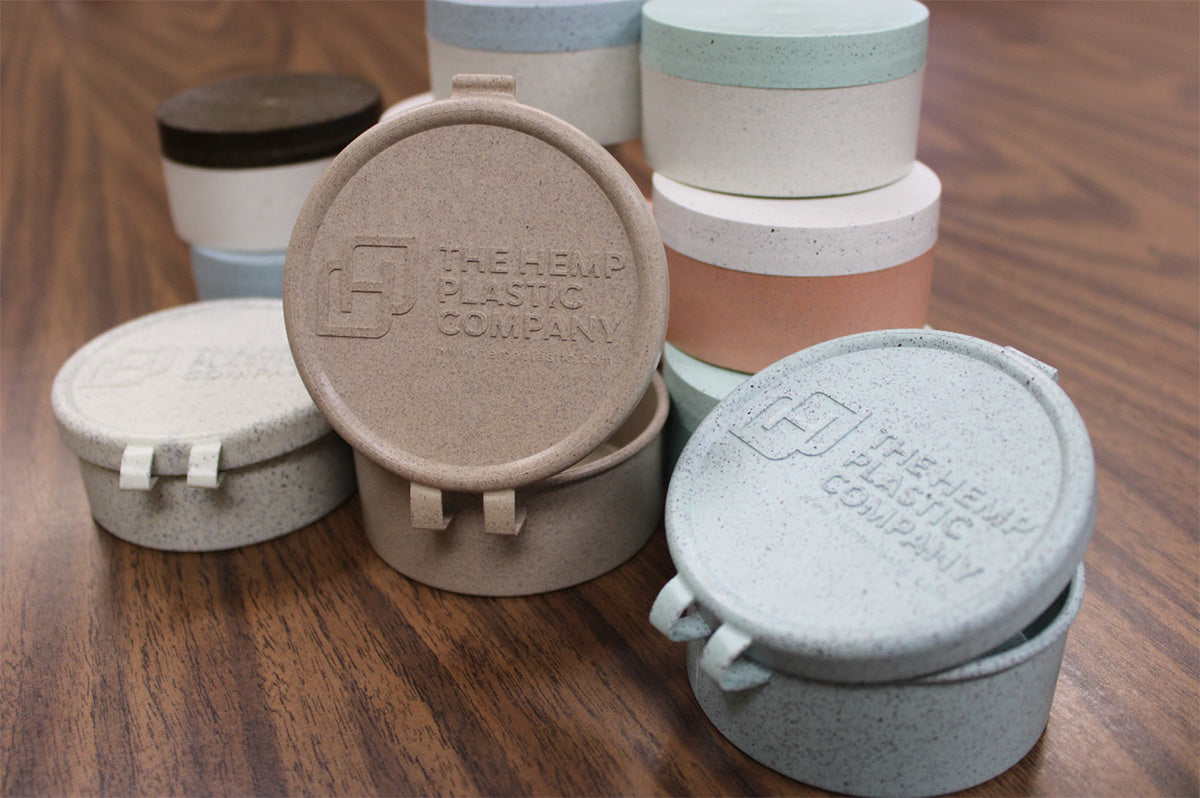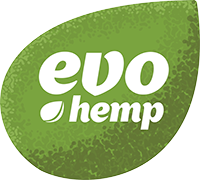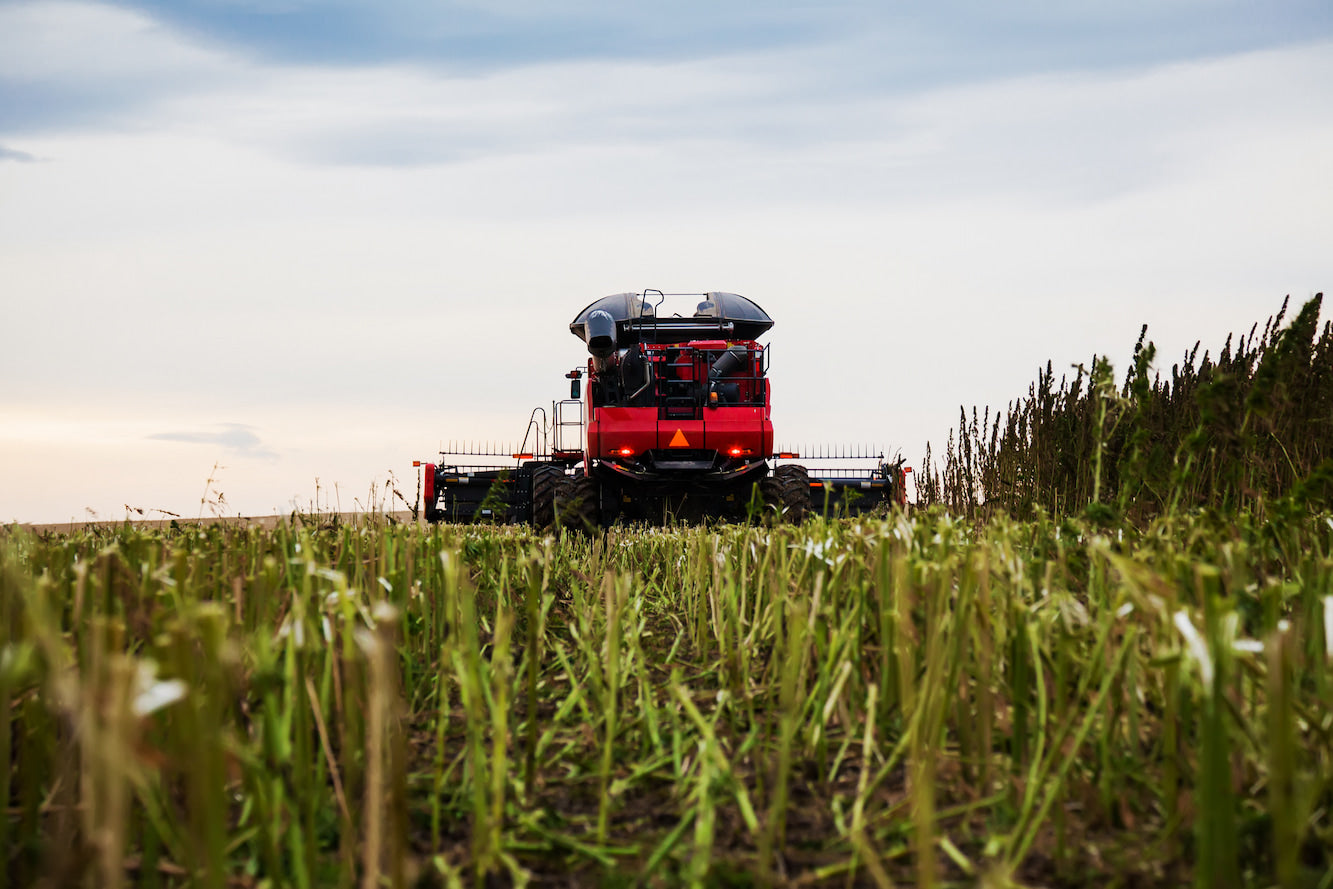Hemp Plastic: The Future of Green Manufacturing

Currently, making paper requires cutting down carbon-capturing trees that have been growing for decades, and sometimes even centuries.
Meanwhile, a dozen hemp plants take up the same amount of space as a single tree and can be regrown within months rather than decades. Over the course of twenty years, hemp can produce up to ten times more paper than trees per acre while having a much lower environmental impact.
Like trees, hemp is carbon capturing, which means that during the process of photosynthesis, hemp absorbs carbon dioxide from the atmosphere and stores it within.
Many experts believe that cultivating hemp can be carbon-neutral or even carbon-negative, meaning that hemp can absorb as much or more CO2 from the atmosphere than the entire process of harvesting, processing, and transporting hemp emits.
And while fracking for plastic-making petroleum contaminates the soil, cultivating hemp can actually remove toxins from the soil it is grown in while reintroducing up to 60% of the nutrients it uses back into the land.
We know – how is hemp not used in everything yet??
The History of Hemp in the US
While hemp was grown in the US for hundreds of years, a shift occurred in the early 1900s.
To understand the pushback against hemp in the United States, it’s important to note that hemp and cannabis are not different species of plants, as was incorrectly believed for decades. Rather, hemp is simply a type of the Cannabis sativa plant species, along with every other variety of cannabis plant you hear about.
Hemp Products As Competition
In the early 1920’s and 1930’s, waves of racism and anti-immigration sentiments in the 1930’s led to anti-cannabis propaganda.
Around the same time, the DuPont company began creating polymers out of crude oils. These polymers could be cheaply made from fossil fuels, and easily turned into plastics and textiles.
Hemp-derived plastics and cloths were competition, and because the DuPont family was one of America’s richest families at the time, they had the ability to influence politics.
The DuPont family worked to lobby against hemp, and between the fear-mongering and lobbying, a tax on cannabis was enacted in 1937 that made it costly and difficult to grow hemp in the country.
Cannabis Tax
For a brief period in the 1940s, hemp seemed to be on the rise. In 1941, Henry Ford created a prototype of a car whose body was made of plastic that was 70% hemp (and also: it was incredibly sturdy).
Shortly after, the US government paused its cannabis tax during World War II due to a need for war supplies. The US Department of Agriculture launched the Hemp for Victory program, encouraging farmers to cultivate hemp that was then used to produce supplies necessary for the military, such as rope.
During the war, hemp production expanded by more than 150,000 acres.
This hemp boom was short-lived, however, as the tax was reinstated after the war. And, despite hemp cultivation greatly benefiting war efforts, cannabis and hemp were classified as illegal Schedule 1 drugs when the Controlled Substance Act was passed in 1971.
In 1974, scientist Ernest Small published his book, The Species Problem in Cannabis: Science & Semantics which proposed that hemp be legally classified differently than cannabis based on whether it has more or less than 0.3% THC content.
Small later admitted this number was chosen somewhat arbitrarily; cannabis doesn’t immediately become intoxicating at 0.4% content, but still, the number stuck.
New Era of Hemp
Fast forward to 2014, when we start inching toward legalizing hemp again. President Obama signed the Farm Bill, allowing research groups and institutions to start pilot programs for hemp farming.
And at last, in 2018, the Farm Bill was amended to legalize the cultivation of hemp in the US and remove hemp and its byproducts from the Controlled Substance Act.
This amendment makes it legal for US farmers to grow hemp for commercial use, with the disappointing and racist caveat that anyone previously criminalized for a felony related to cannabis use could not apply to grow hemp for ten years after their release, despite the fact that cannabis has now been legalized in several states across the U.S.
Even now, hemp continues to face the same barriers we saw in the 1930s. Stymied by decades of misinformation, bans, and anti-hemp lobbying, hemp remains largely misunderstood, expensive, and inaccessible.
Meanwhile, the government heavily subsidizes fossil fuels, leaving the US ill-equipped to produce hemp plastics in a cost-effective and large-scale way.
But, there is hope!
The Farm Bill paves the way for more sustainable hemp growth down the line and more farmers experimenting with varieties of hemp that can be used for making plastic. As the industry grows, hemp prices are also expected to drop.
And with more people advocating for climate action and pushing for the US to heavily limit its dependency on fossil fuels, more companies are beginning to look into alternatives to traditional plastics.
What Can Hemp Plastic Be Used For?
Hemp plastic can be used for just about anything! You aren’t losing out on quality when swapping petroleum out for hemp.
Hemp-derived cellulose is strong and durable, while remaining lightweight. Hemp plastics can also be molded into different shapes, making it a plausible alternative for:
- Electronics
- Dinnerware
- Storage bins and containers
- Furniture
- Toys
- Makeup
- Bottles
- bags
- Car parts (as our friend Henry Ford showed us!)
Currently, we lack the technology to create too many products using only hemp-derived plastic. However, we are hopeful that this will change soon.
In 2020, South Dakota University announced a research project meant to explore more effective ways to extract cellulose from hemp. With more investments in new technology, we are likely to find new ways to replace harmful plastics with hemp alternatives.
What Are the Harmful Risks of Traditional Plastic?
From creation to disposal, traditional plastics can impact the environment in a number of ways.
When cellulose (which is the basic building block of plastic) is obtained from petroleum, it requires fracking to obtain. Fracking can release toxins into the air, contaminate the nearby soil, and increase greenhouse gas emissions.
The process of turning petroleum byproducts into finished plastic also requires many resources and can release chemicals into the air.
And that is all before the plastic even makes it into our hands. New problems take hold once a plastic object is used and disposed of.
Petroleum-based plastics can take hundreds of years to decompose, meaning they can sit in landfills for multiple human lifetimes.
An estimated eight million tons of discarded plastic waste end up in our oceans each year, largely due to drift from coastal nations.
And when exposed to sunlight, plastics can break down into small pieces called microplastics. When plastic turns into microplastics in the ocean, the small fragments are consumed by fish.
These microplastics can move through the food chain, affecting creatures near and far.
Microplastics can also pollute the air, and infiltrate our water systems, meaning that humans also unknowingly ingest these small particles.
The chemicals that leak from conventional plastics can disrupt the endocrine system and produce adverse effects when they work their way into the body.
How Does Hemp Plastic Hold Up?
Cellulose isn’t only found in petroleums deep in the ground, this complex carbohydrate is also a basic structural element in plant cell walls. Hemp stems contain 60-70% cellulose, making them an ideal option to create environmentally friendly cellophane, rayon, and plastics.
Unlike petroleum cellulose, hemp cellulose doesn’t require fracking or fossil fuels to obtain. In contrast, growing hemp takes relatively minimal amounts of water with little to no chemicals, and it absorbs carbon dioxide from the atmosphere in the meantime.
Hemp plastic doesn’t produce any toxic byproducts, either. And once a hemp plastic product has run its course, it is biodegradable. Unlike plastics that can remain in for hundreds of years, hemp can decompose under the right conditions within just a few months – and won’t release any toxins while doing so.
But hang on, we need to emphasize the “under the right conditions”part above. While hemp plastic is clearly safer than petroleum-based plastics, that doesn’t mean it can’t cause problems if discarded incorrectly. So let’s quickly run through how to best discard different plastics.
How To Discard Various Plastics
Don’t Throw Away Your Hemp Plastics! As a plant-based bioplastic, hemp can be fully broken down by microorganisms in a way that traditional plastics can’t.
However, biodegradable plastics and bioplastics won’t biodegrade in a landfill. Biodegradable substances need oxygen to fully decompose. If buried deep in a landfill, they can behave similarly to petroleum-based plastics and emit the toxic greenhouse gas methane instead of biodegrading. This wouldn’t do much to fix the problem that creators and users of hemp plastics are trying to fix.
Instead of throwing your hemp plastic away, double-check the label to see if it can be recycled or sent to an industrial composting facility, where the proper conditions exist to support successful decomposition.
Unfortunately, most of the current bioplastics on the market are a mix of plant-based plastics and fossil-fuel-derived plastics, which can make disposing of it a little trickier. The best option is to read the label to see if your product can be recycled or composted.
If not, there is little else you can do besides throw it away (or try to find another use for it!).
What About Compostable Plastics?
If you have a plastic product that says it is compostable, that’s great! That means that your plastic will biodegrade quickly in an industrial compost heap and will break down into nutrient-rich compounds that support the soil and benefit the environment.
The catch is that these plastics need to be composted at an industrial composting facility – they should not be recycled and should not be composted at home.
Compostable plastic requires high temperatures and certain microorganisms to effectively break down, and unless the label specifically says it is okay for home composting, it won’t do very well in the conditions of most home composting setups.
Recycling compostable plastics can also have undesirable environmental impacts. Not only will this type of plastic not be accepted at most facilities, but it could potentially contaminate recycling streams and lead to the disposal of contaminated recyclable items.
How About Regular Plastics?
If possible, it is always better to recycle plastics than throw them away, where they are more likely to end up in landfills or the oceans.
Another unfortunate reality is that our existing recycling plants cannot process certain types of plastic, leaving us with few options. You can always check the label, and even contact your local government or recycling agency to find out what their specific policies are.
The Drawbacks
These rules can feel frustratingly counterintuitive and difficult to follow. Trying to protect the environment shouldn’t be this confusing!
This is why it is important to not just find more sustainable and non-toxic alternatives to plastics and invest in technologies that will allow for the production of 100% plant-based bioplastics (rather than a hodge podge of plant-based and fossil-fuel-based), but also invest in more accessible ways to properly and easily discard these plastics in an environmentally friendly way.
In the meantime, we are hopeful about the new technologies on the horizon.
While hemp plastics won’t fully heal the environment on their own or outpace petroleum plastics overnight; limiting our plastic use, knowing how to discard different forms of plastics properly, and advocating for more government and corporate support of alternative plastics and technologies are steps we can take toward a greener future.
evo hemp as Part of Green Manufacturing
At evo hemp, we understand the power of hemp and aim to honor the plant’s rich history by ethically sourcing all of our hemp from Black and Indigenous farmers. We are excited by all hemp has to offer, and can’t wait to see the hemp plastic movement continue to grow!
Sources
The Future For Hemp | European Industrial Hemp Association
Environmental benefits of hemp | McGill University
Hemp-based plastic | The Hash Marihuana & Hemp Museum
The Species Problem in Cannabis: Science & Semantics | Ernest Small
The Science and Engineering for a Biobased Industry and Economy | SOUTH DAKOTA STATE UNIVERSITY
The world's plastic pollution crisis explained | National Geographic
- Tags: sustainability



